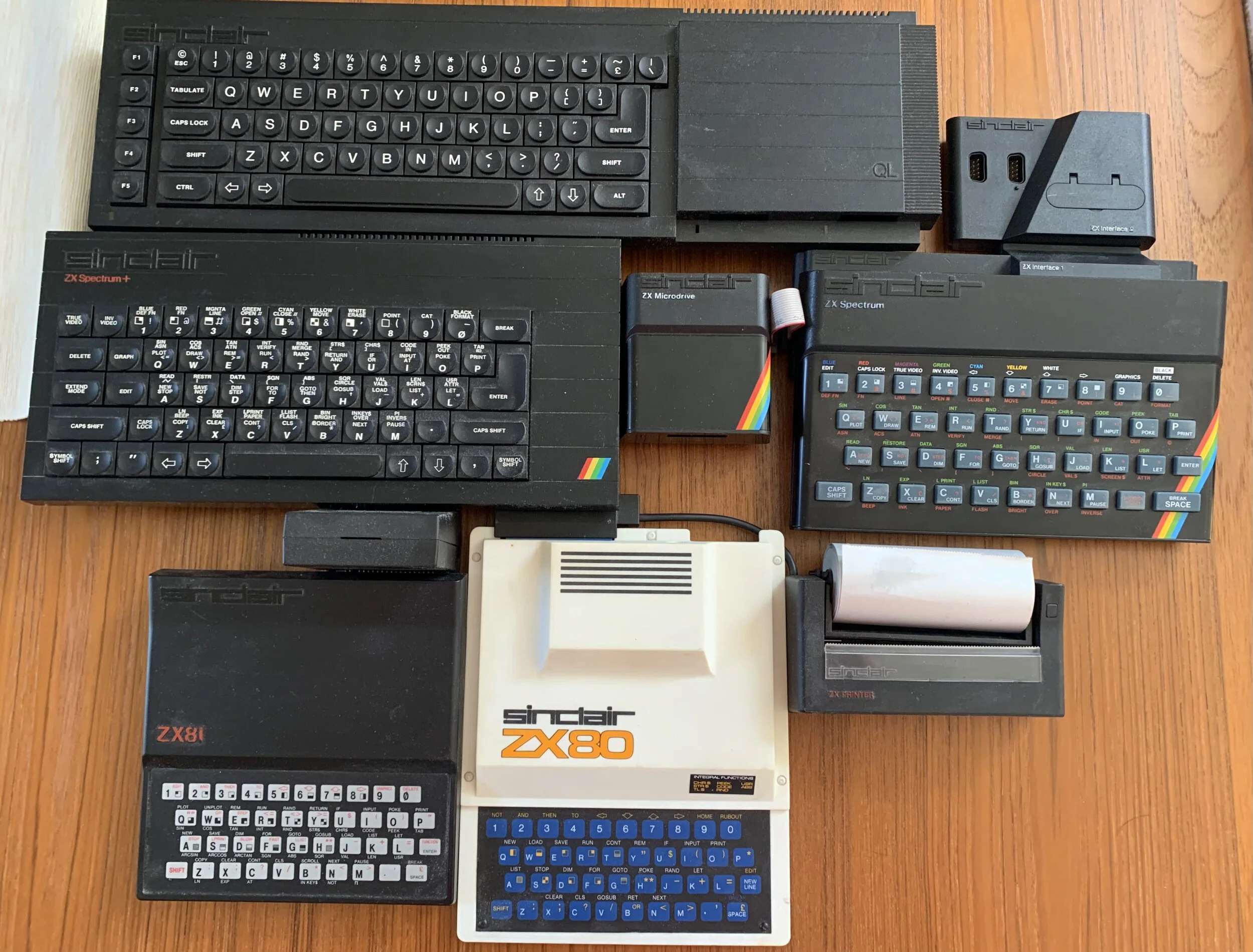The finest educational/gaming attachment for a television, in the world. Probably.
Here’s another Spectrum clone from Eastern Europe, this time Belarus.
The Raton 9003 isn’t going to win any design awards. It’s made of a very brittle feeling plastic which has a rather unappealing texture. I’m not sure what type of plastic is used or the manufacturing process, but it feels… cheap.
It’s quite a large case, with the keyboard area being almost exactly the same width as a Spectrum.
The keyboard itself is a full-travel keyboard with a reasonable feel. The keys have no rounding on the corners so they feel quite sharp and running your fingers across the keys isn’t a pleasant feeling. Whether it’s due to age, or whether it was always like this, the key tops are very prone to losing their printing to the extent that I really wasn’t able to give the keyboard much of a clean without risking end in up with an involuntary Das Keyboard.
All the multiple functions of the Spectrum keyboard, plus a Cyrillic character set, are printed in black on the keys and even on the keys that haven’t faded, it’s very hard to make everything out. Additional colors may have helped, but I think the printing quality is the primary issue so it may just have ended up with an even bigger mess.
I tried light-briting the keys but unfortunately, this had no visible effect. Light-briting is a way to remove the yellowing from old plastic that is similar to retro-briting but requires no hydrogen peroxide. Hydrogen peroxide would almost certainly remove whatever printing remained on the keys so that wasn’t an option. Light-briting will work in some cases, but not here apparently.
There are no connectors, buttons, or switches on the sides of the Raton, but you do get a better look at the black on white color scheme. The only other 8-bit that I can think of that does a dark-on-light scheme is the Atari XL series, but other than a dark top case on a light bottom case, there is no real similarity. In my opinion, the XL is approximately one million times better than the Raton, but I also happen to believe that the XL is one of the best-looking 8-bit micros.
Swoon!
Photo credit: Ethan-Amos via Wikimedia Commons
All of the connectors are on the back of the Raton.
From left to right, a hardwired power cable (which I removed), a blanked-off “Interface” connector, a joystick port, RGB monitor connector, a second interface connector which is accessible this time, and a cassette recorder connection.
I actually also received a joystick with the Raton. I’m not sure if it was specifically designed for, or bundled with the Raton.
The joystick looks to be based on the Atari 7800 controller. I’ve never handled a 7800 controller, but I hope it feels better than this, which is pretty creaky and flimsy. Unlike the 7800 joysticks, both buttons are on the same side of the joystick.
The bottom of the joystick reveals that it’s actually a Vesta-IM1 Manipulator Manual. So, there’s that. (Thanks to George Rudolf Mezzomo for the correction of the model name)
The bottom of the case is relatively empty, other than places for rubber feel (long gone), some vent holes and a “label” molded into the plastic of the case.
The label states that this is a Raton-9003 from 1993. Thanks to the assistance of my Twitter friend Marina Epelman (@marinaepelman), I can also say that the first two lines of the label refer to this as an “educational/gaming attachment (or accessory) for a television”, which I think is just awesome.
Let’s crack this puppy open…
It looks like the right third of the board is dedicated to power with a couple of what I assume are (fairly large) capacitors. The middle is fairly empty but this may be to accommodate all the connections for the keyboard (?). Finally, the left is where most of the chips are located.
One thing to note is that the interface connecter that is blanked off on the back of the Raton, is blanked off for a reason because there’s no connector. There isn’t even room to add a connector looking at the design of the board. Perhaps there was another machine that did have the connector, or it was intended for a future revision of the board. Who knows…
The chip in the center of the above image is the CPU and is a clone of the Zilog Z80A
This chip may be the equivalent of the ULA in the Spectrum, but that’s sheer guesswork on my part. (Thanks to George Rudolf Mezzomo for verifying that it is a ULA-equivalent gate array, what the Soviets called a БМК.)
So that’s a quick peek at the Raton-9003. From a looks point of view, this is probably one of the more underwhelming Eastern European clones in my collection, but here it is.

















